Monday I was doing some landscaping and I found these Magicicada nymphs feeding on the roots of a boxwood shrub. They appear to be third-instar Brood II Magicicada nymphs. 9 years old!
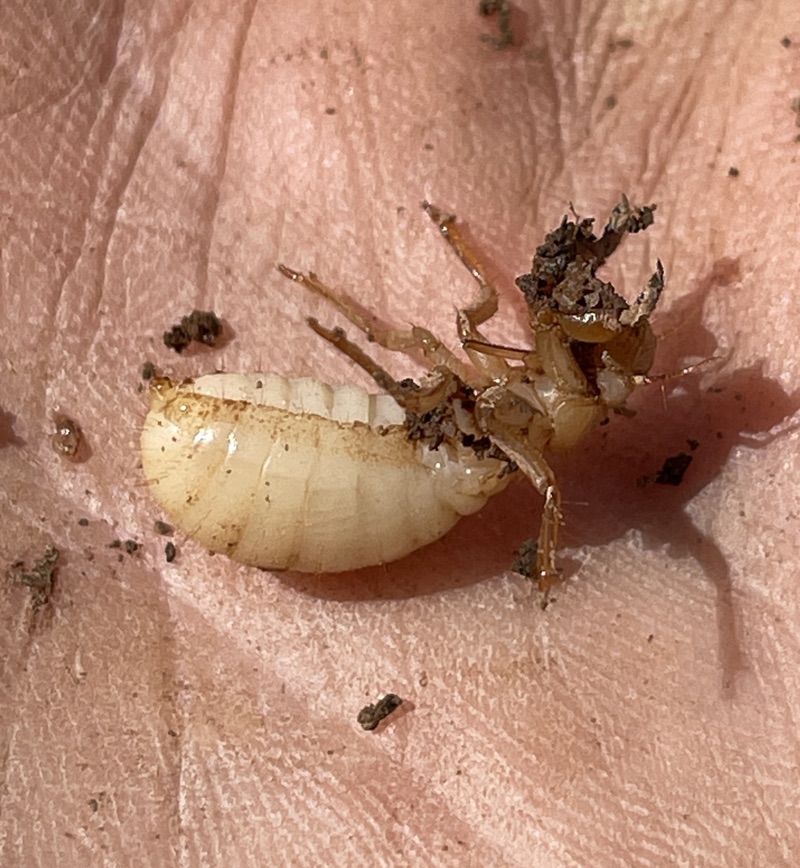

Monday I was doing some landscaping and I found these Magicicada nymphs feeding on the roots of a boxwood shrub. They appear to be third-instar Brood II Magicicada nymphs. 9 years old!


This is a list of cicada-related research published so far in 2022. 46!
Here’s a video of a Megatibicen auletes cicada singing at dusk in Brendan T Byrne State Park in New Jersey on July 15th, 2021.
* Note as of 2023 the name of this cicada has changed to Megatibicen grossus. You can also call it a Northern Dusk-Signing Cicada.
Here are some Neotibicen lyricen molting in New Jersey July 2021.
Rich caramel eyes; blues & pinks in pronotal collar, legs, and mesonotum; green wings (that will stay green) and orange abdomen.
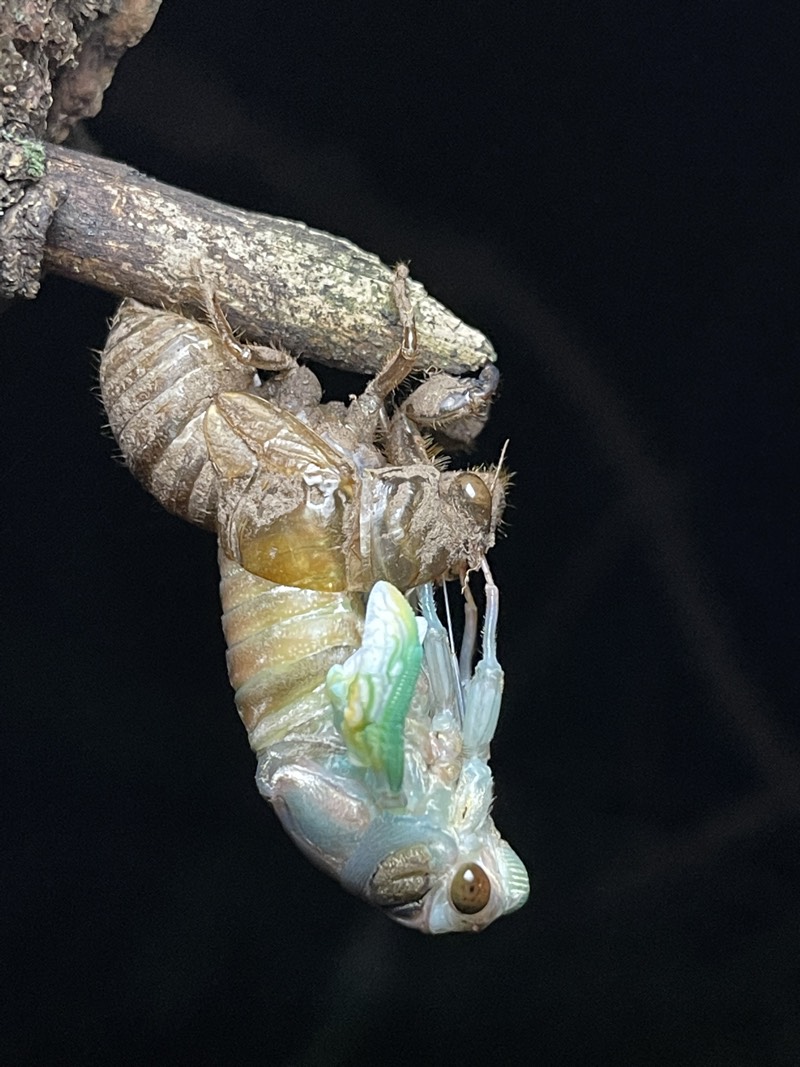
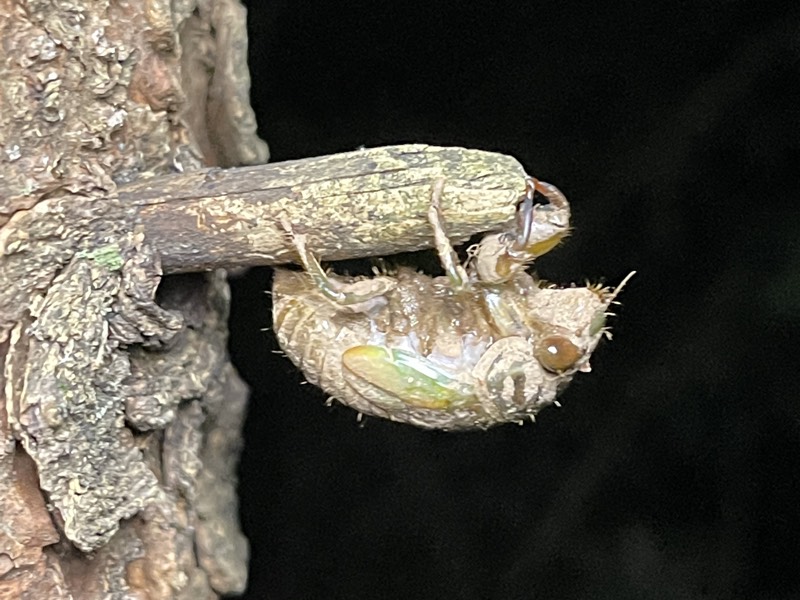

Here’s some photos of Molting Neotibicen tibicen tibicen cicadas taken in New Jersey in July of 2021.
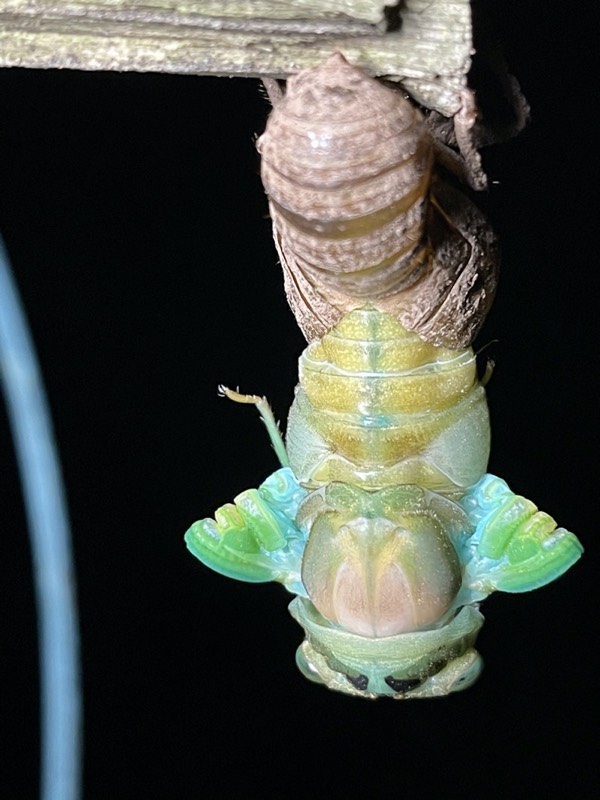
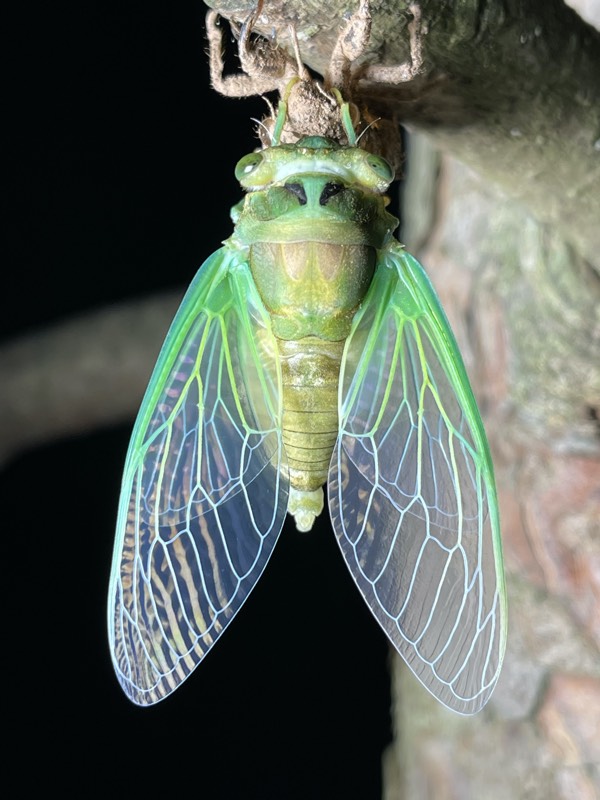
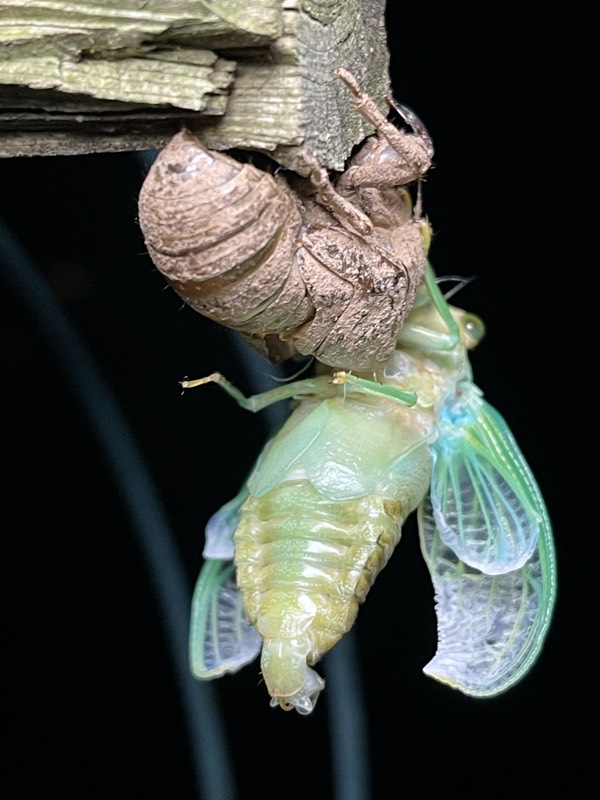
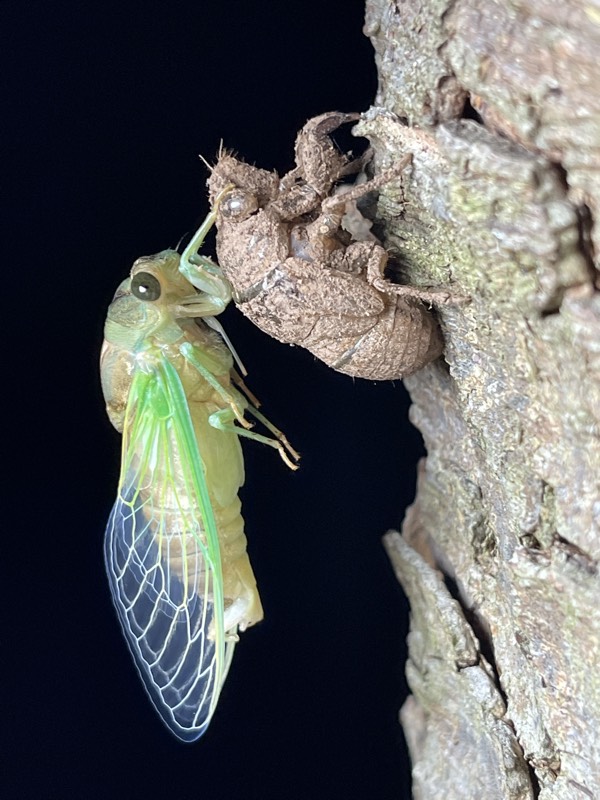
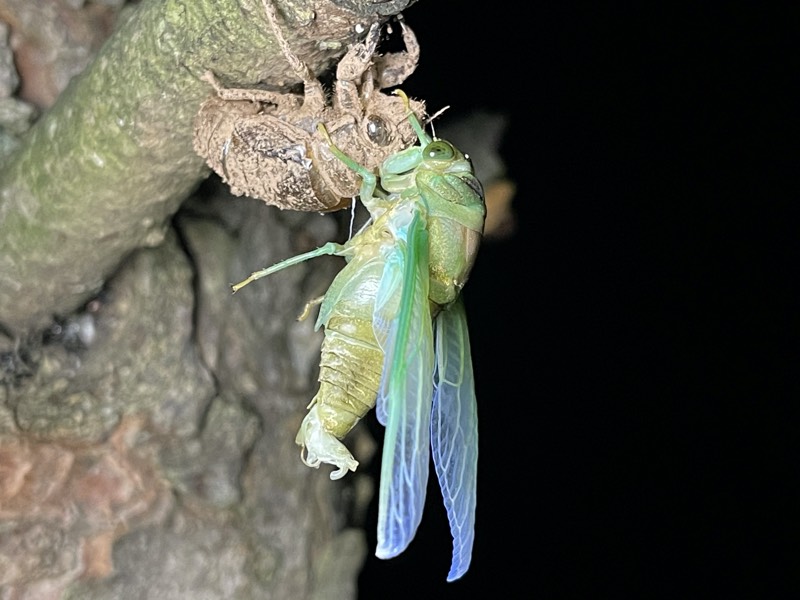
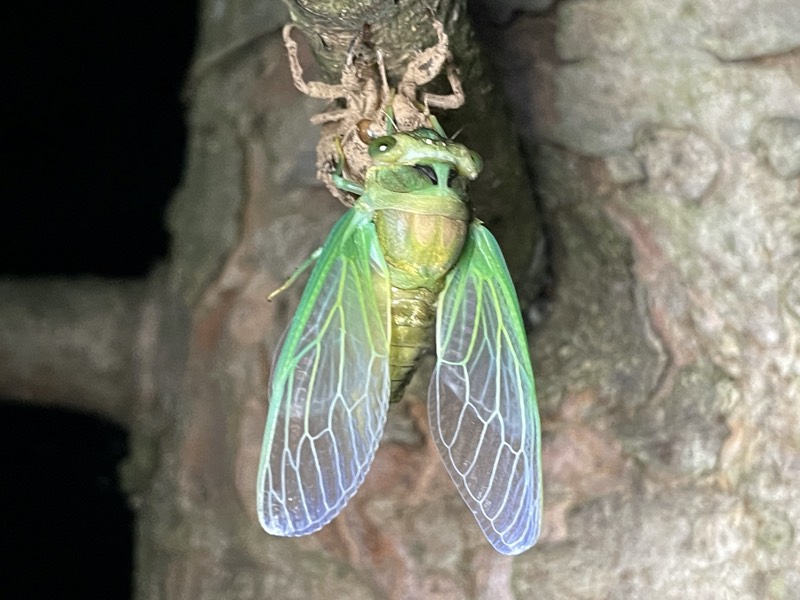
“Unique Cicada” (that is how Chrome translates it) is a large blog featuring many photos of cicadas from around the world. The site is owned by @musinomushi on Twitter. Instantly one of the premier cicada websites.
The site is categorized by cicada tribes, for example, Carinetini, Cryptotympanini and Zammarini.
Here’s what it looks like translated to English by Chrome.
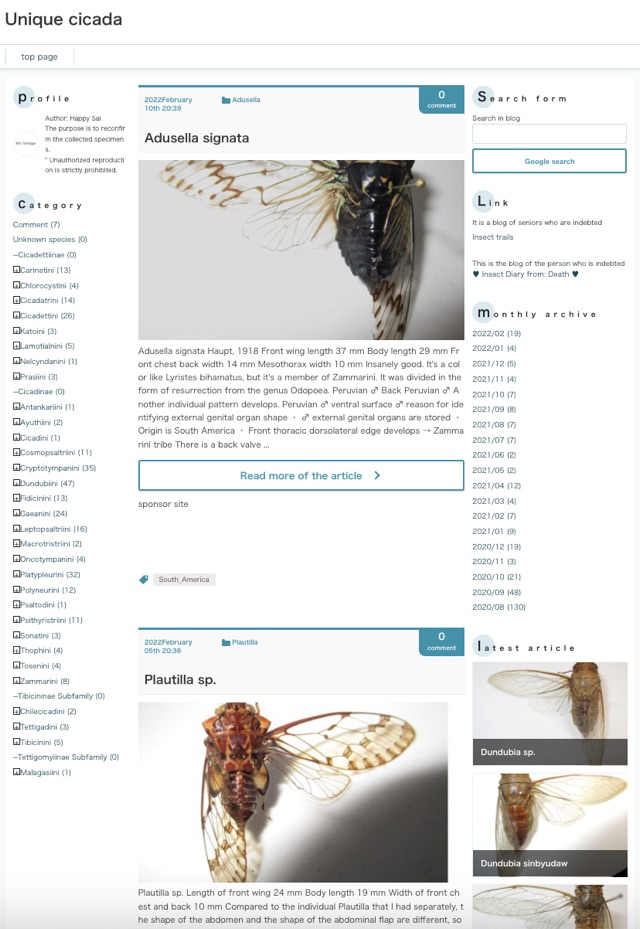

Magicicada septendecim aka 17-year Pharaoh Cicada.
Cicadas (Insecta: Hemiptera: Cicadidae) are insects, best known for the songs sung by most, but not all, male cicadas. Males sing by flexing their tymbals, which are drum-like organs found in their abdomens. Small muscles rapidly pull the tymbals in and out of shape. The cicada’s primarily hollow abdomen intensifies the sound.

An illustration of cicada tymbals from C.L. Marlatt’s The Periodical Cicada. c shows the muscles and tendons connected to the tymbals, and d & e shows the bending of the tymbal.
Female and some male cicadas will also make a sound by flicking their wings, but it isn’t the same as the sound for which cicadas are known. Listen to some of the songs cicadas sing.
Cicadas belong to the order Hemiptera, suborder Auchenorrhyncha, superfamily Cicadoidea and families Cicadidae (the vast majority of cicadas) or Tettigarctidae (only two species). There are five subfamilies of Cicadidae: Derotettiginae, Tibicininae, Tettigomyiinae, Cicadettinae, and Cicadinae. Leafhoppers, spittlebugs, and jumping plant lice are close relatives of the cicada. Hemiptera is different from other insects in that both the nymph and adult forms have a beak (aka rostrum), which they use to suck fluids called xylem from plants. This is how they both eat and drink.

A Magicicada drinking from a tree. Photo by Roy Troutman.
The body of a cicada is composed of a head, thorax & abdomen. The head features two antennae, two compound eyes, three simple eyes (ocelli), a clypeus that connects the beak to the head (the clypeus looks like the grill of a combustion vehicle). The thorax features two sets of wings (forewings & hindwings), six sets of legs, spiracles for breathing, opercula covering the tympana (“eardrums”), and in males of species that have them, tymbals & tymbal covers. The abdomen features tergites (dorsal) & sternites (ventral), more spiracles for breathing, and reproductive organs. Cicadidae and Tettigarctidae have major differences in anatomy, which you can learn about here.
The Latin root for the word for cicada is cicada. Cicadas are called semi in Japan, cigale in France, and cigarra in Spain. Names for cicadas in countries around the world. The pronunciation of the word cicada depends on your local dialect. You can say “si-Kah-da” or “si-kay-da”.

Top row, left to right: cicada egg (Roy Troutman), freshly hatched nymph (Roy Troutman), second and third instar nymphs (Elias Bonaros). Bottom row, left to right: fourth instar nymph, teneral adult, adult. (Cicada Mania).
Cicadas begin life as a rice-shaped egg, which the female deposits in a groove she makes in a tree limb, using her ovipositor. The groove provides shelter and exposes the tree fluids, which the young cicadas feed on. These grooves can kill small branches. When the branches die and the leaves turn brown, it is called flagging.
Once the cicada hatches from the egg it will begin to feed on the tree fluids. At this point, it looks like a termite or a small white ant. Once the young cicada is ready, it crawls from the groove and falls to the ground where it will dig until it finds roots to feed on. It will typically start with smaller roots of grasses and work its way up to the roots of its host tree. The cicada will stay underground from 2 to 17 years depending on the species. Cicadas are active underground, tunneling, feeding, and not sleeping or hibernating as commonly thought. Cicadas go through multiple phases, called instars, while underground. Magicicada have five instars.
After the long 2 to 17 years, cicadas emerge from the ground as nymphs. Nymphs climb the nearest available vertical surface (usually a plant) and begin to shed their nymph exoskeleton. Free of their old skin, their wings will inflate with fluid (hemolymph) and their adult skin will harden (sclerotize). Once their new wings and body are ready, they can begin their brief adult life.
Adult cicadas, also called imagoes, spend their time in trees looking for a mate. Males sing (or otherwise vibrate the air or their surroundings), females respond, mating begins, and the cycle of life begins again.
There are over 190 varieties (including species & subspecies) of cicadas in North America, and over 3,390 varieties of cicadas around the world. This number grows each year as researchers discover and document new species. Cicadas exist on every continent but Antarctica.
The 3,390 comes from counting the species of cicadas mentioned in Allen Sanborn’s Catalogue of the Cicadoidea.
Cicadas were discovered and described in 2014, take a look at research since then published: 2021, 2020, 2019, 2018, etc.
There are three types of cicada life cycles:
Annual: Cicada species with annual life cycles emerge every year, for example, Swamp Cicadas (Neotibicen tibicen) emerge every year in the United States, and Green Grocers (Cyclochila australasiae) emerge every year in Australia.
Periodical: Cicadas species with periodical life cycles emerge together after long periods of time, for example, Magicicada septendecim will emerge every 17 years (Find out where they’ll emerge next). Magicicada periodical cicadas are organized into Broods, which correspond to the series of years in which they will emerge. Only periodical cicadas are organized by Roman-numeral Broods.
Protoperiodical: Cicada species with protoperiodical life cycles might emerge every year, but every so many years they emerge together in large numbers, like certain Okanagana depending on factors like proximity to other species and rainfall accumulations (Chatfield-Taylor 2020).